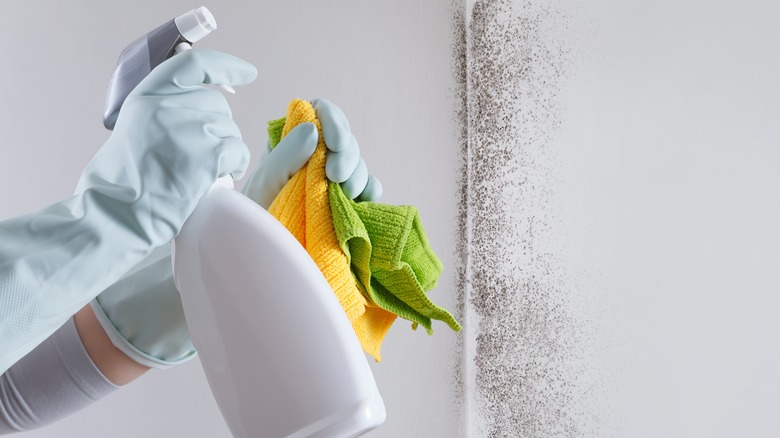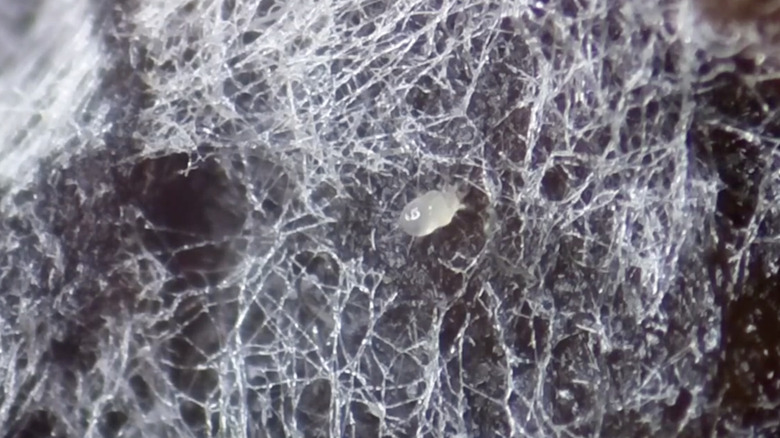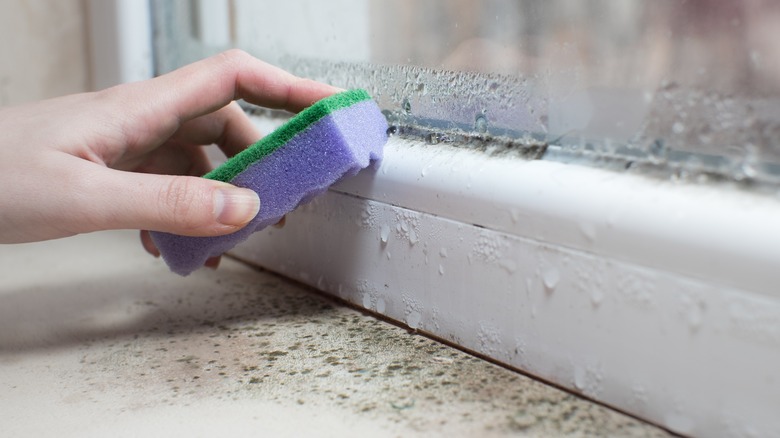Mold Mites: What Are They, And Should You Worry About Getting Rid Of Them?
Many of us are familiar with having to combat pests in our homes. Mites can be some of the hardest to keep at bay, given we can hardly see them. We have all heard about and often dealt with dust mites, clover mites, and even mites like chiggers and scabies. But one mite you may not have known that could be lurking around your home is mold mites. These pests feed directly on mold, but that doesn't mean they don't adapt and find other food sources to sustain them.
Seeking out signs for mold mites is difficult, as they are microscopic. But it is safe always to assume that where there is mold, mold mites are also present. If looking carefully, you may be able to notice white groupings in your pantry or slight movement on top of mold patches that can indicate their presence. While they can't directly cause us much harm, they are troublesome because they can contaminate our food, and it is never healthy to have mold growing in our homes. Mold is not always noticeable to us and can grow in areas we would never consider inspecting. It's essential to take preventive measures to avoid mold growth, and like many of the other mites we deal with, you should strive to eradicate mold mites as soon as you realize they are a problem.
What are mold mites?
Mold mites are a type of arthropod, given the scientific name of Tyrophagus Putrescentiae. They are minuscule, only approximately 0.3 to 0.4 millimeters in size, and usually are either translucent or a tannish gray in coloration. Mold mites feed specifically on mold, and just one small patch of mold can host upwards of a thousand mold mites. Although mold is their main food source, they have also earned the name cheese mites and ham mites because they are known to feed on yeast and other foods that are high in protein and fats.
Mold mites will be expected in environments that are moist and warm, the same conditions in which mold grows. The lifespan of these mites can actually be decently long in terms of insect life cycles, lasting between two and three weeks. Each female can also lay up to 800 eggs in its lifetime, creating rapid reproduction. As gross as mold mites are, they don't really cause us or our property any harm. They can't bite us, and any allergic reaction we may have to them would be from the hairs on their body called setae or, more likely, the mold itself. But just because they are seemingly-harmless doesn't mean we should ignore their presence in our homes. It is best to start the extermination process as soon as you become aware of the infestation.
Getting rid of mold mites
While mold mites won't necessarily directly harm us or our homes, nobody wants thousands of tiny mites roaming about their house, and the mold itself is hazardous to our health. Mold growth in and around our homes can cause a lot of issues, from structural damage and deterioration to sickness and respiratory complications. Removing mold will help eliminate a large chunk of mold mites, but because they are an adaptive species, be sure to thoroughly check your pantries and cupboards for mites and throw out any food that may be contaminated or affected.
It may be best to call in a professional for larger-scale mold removal, not only to ensure that the mold is completely wiped out but also to certify that the mold mites are taken care of. The larger the mold problem, the bigger the mite infestation typically is, and home remedies won't have the same effect as exhaustive pesticides. However, if you have found small patches of mold and mites, home remedies like bleach, vinegar and water, lemon, tea tree oil, baking soda, and borax could help eliminate the problem. Overall, your best bet is to work to prevent mold growth around the home in the first place. Change out air filters frequently and invest in dehumidifiers for susceptible rooms like kitchens, bathrooms, and basements. Keeping humidity and moisture levels low around your property will make all the difference.


